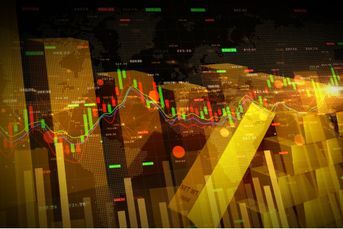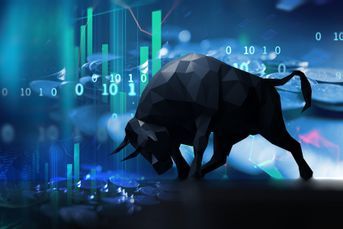SEC looks to shed light on dark pools’ role in market madness
The proliferation of alternative exhanges may have played a part in wild ride on the stock market
Federal regulators reviewing yesterday’s stock plunge will try to determine if the five-fold increase in the number of American equity exchanges has left them unable to manage the biggest surges in volume.
Almost 1.3 billion shares traded on U.S. markets in a 10- minute span starting at 2:40 p.m., six times the average, sending prices lower on platforms from New York to Kansas City. Nasdaq OMX Group Inc. said it canceled transactions in 286 stocks where swings grew too wide. Federal agencies began inquiries after more than $700 billion in value was erased in an eight-minute span.
While most of the losses were reversed as the pace of trading slowed and exchanges were able to match buyers and sellers, the 998-point plunge in the Dow Jones Industrial Average raised concerns that the U.S. was entering another financial crisis. The Securities and Exchange Commission will try to determine if market participants accidentally or maliciously derailed trading, according to two people familiar with the situation. Lawmakers plan to hold hearings next week.
“Markets aren’t supposed to work this way,” said Jamie Selway, managing director of White Cap Trading LLC in New York and a former chief economist at NYSE Arca, a unit of NYSE Euronext. “There was a mad rush for the exits. We just don’t know whether it was accidental or intentional.”
The Standard & Poor’s 500 Index closed at 1,128.15 in New York, down 3.2 percent, after losing as much as 8.6 percent. The rout showed how the fragmentation of the U.S. equity market may suppress demand when it’s needed most, especially when the New York Stock Exchange attempts to calm trading, said James Angel, a finance professor at Georgetown University in Washington.
NYSE Euronext Chief Operating Officer Larry Leibowitz said the Big Board prevented a bigger decline.
While the first half of the intraday plunge probably reflected normal trading as concern increased that Greece’s credit crisis will spread, the selloff snowballed because of orders sent to venues with no investors willing to match them, Leibowitz said in a Bloomberg Television interview.
Accenture Plc, Exelon Corp. and Philip Morris International Inc. were among U.S. stocks that dropped more than 90 percent as U.S. equities tumbled, before recovering within minutes, according to Bloomberg data. Prices fell to pennies in some companies after the New York Stock Exchange switched from electronic matching to auctions, a program that encourages some sell orders to flow to smaller exchanges that had few if any buyers, according to Leibowitz.
“If you look at the charts you can see fairly clearly where the trades came in,” he said from New York. “It’s that V-shaped drop where it came down and snapped right back up. You had some very high-cap stocks trading down 50 percent or large percentages in a split-instant because there really was no liquidity in electronic markets.”
Increasing automation and competition have reduced the NYSE and Nasdaq’s volume in securities they list from as much as 80 percent in the last decade. Now, less than 30 percent of trading in their companies takes place on their networks as orders are dispersed to as many as 50 competing venues, almost all of them fully electronic. Twenty years ago, fewer than 10 exchanges competed for all U.S. equity trades.
More than 29.4 billion shares changed hands in U.S. markets yesterday, the most since October 2008. In addition to traditional exchanges such as the NYSE, rivals Bats Global Markets Inc. in Kansas City and Jersey City, New Jersey-based Direct Edge LLC handled millions of trades. About 2.6 billion shares traded on the NYSE, the lowest level relative to overall volume in three years, data compiled by Bloomberg show.
“When a large order or series of orders comes into electronic markets, they don’t really have any way to recognize either that they’re a mistake or to slow them down to attract the proper liquidity,” Leibowitz said. “Electronic markets actually traded all the way through the slower New York Stock Exchange markets where we were trying to slow down trading.”
Rapid-fire orders trigger what the NYSE calls liquidity replenishment points, or LRPs, shifting the market into auctions. While the system is designed to restore order on the Big Board, trading is so fast during times of panic that orders routed past the exchange may swamp other venues and exhaust buy orders, said Angel at Georgetown.
That’s when prices may plummet as orders execute against so-called stub quotes from market makers. Brokers can set the quotes as low as a penny a share because they’re never expected to be used.
“The LRP model doesn’t work,” Angel said. “The idea that when the market is going crazy you can slow down trading in one market and not others means that sell orders were churning through the books at every other market. NYSE dropped out of the running.”
Nasdaq OMX said it will cancel stock trades that were more than 60 percent above or below price levels at 2:40 p.m. New York time, just before U.S. equities plummeted. The New York- based firm said it investigated trades between 2:40 p.m. and 3 p.m.
CBOE Stock Exchange canceled 18 trades of 100 shares that took place at 1 cent in Accenture over seven seconds starting at 2:47 p.m. The trades occurred against stub quotes, according to David Harris, the exchange’s president. Trades were canceled on CBSX because the market is newer and its book of orders is “thinner,” which led to transactions occurring away from reasonable prices, he said.
“We are all connected to each other,” Harris said. “We receive orders electronically and if an order requires an execution we execute it. If it’s away from the market and violates our clearly erroneous trade policy, we bust the trade.”
The market rout triggered scrutiny from lawmakers. U.S. Representative Paul Kanjorski, a Pennsylvania Democrat, set a May 11 hearing. U.S. Senator Ted Kaufman, a Delaware Democrat, questioned whether markets that increasingly rely on computer algorithms to execute thousands of transactions in seconds triggered false trades.
“This is unacceptable,” Kanjorski, who leads the House Financial Services subcommittee that oversees the SEC, said in a statement. “We cannot allow a technological error to spook the markets and cause panic.”
Nasdaq’s decision means that trades in Cincinnati-based Procter & Gamble Co., which fell as much as 37 percent for the biggest intraday drop in the Dow industrials, would stand. The world’s largest consumer products company said stock trades that pushed its shares down were probably an error.
Computer programs that increase sell orders when stocks are falling may have exacerbated yesterday’s plunge, said Nick Colas, chief market strategist at BNY ConvergEx Group LLC in New York. Programs that may have smoothed out trading during periods of low volatility can “make market moves a lot worse” when equities are plunging, he said.
“This was like what we saw happen on the worst days of the financial crisis in late 2008 and early 2009,” Colas said. “This is not a healthy dynamic. The markets need to work efficiently and properly, particularly during periods of stress.”
Learn more about reprints and licensing for this article.








